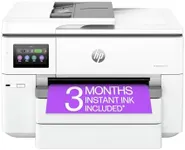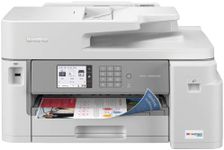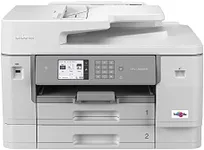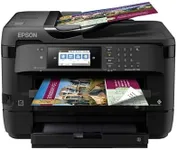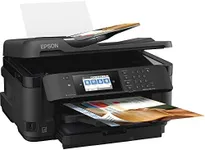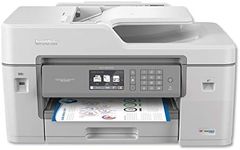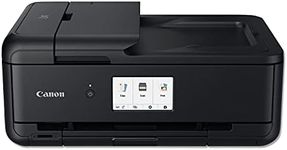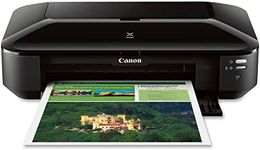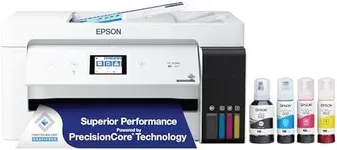Buying Guide for the Best Office 11 X 17 Printers
Choosing the right office printer, especially one that can handle 11 x 17 paper, is crucial for ensuring productivity and meeting your specific printing needs. When selecting a printer, it's important to consider various specifications that will impact the printer's performance, quality, and suitability for your office environment. Understanding these key specs will help you make an informed decision and select a printer that best fits your requirements.Print SpeedPrint speed is measured in pages per minute (PPM) and indicates how quickly a printer can produce documents. This spec is important because it affects how efficiently you can complete large print jobs. For small offices with moderate printing needs, a printer with a speed of 20-30 PPM may be sufficient. For larger offices or those with high-volume printing, look for printers with speeds of 40 PPM or higher. Consider your office's typical print volume to determine the appropriate print speed.
Print QualityPrint quality is measured in dots per inch (DPI) and determines the clarity and detail of printed documents. Higher DPI values result in sharper and more detailed prints. For general office use, a printer with 600 x 600 DPI is usually adequate. However, if your office requires high-quality prints for presentations or marketing materials, consider a printer with 1200 x 1200 DPI or higher. Assess the type of documents you frequently print to choose the right print quality.
Paper HandlingPaper handling refers to the printer's ability to manage different paper sizes and types, including the capacity of input and output trays. This spec is crucial for offices that need to print on 11 x 17 paper, as not all printers support this size. Look for printers with multiple paper trays and a high paper capacity to reduce the need for frequent refilling. If your office prints on various paper types, ensure the printer can handle different weights and finishes. Consider your typical print jobs to determine the necessary paper handling features.
Connectivity OptionsConnectivity options include the various ways a printer can connect to your office network and devices. Common options are USB, Ethernet, and Wi-Fi. This spec is important for ensuring that all office devices can easily access the printer. For a small office, a USB connection might be sufficient, but for larger offices, Ethernet or Wi-Fi connectivity is essential for shared access. Additionally, consider printers with mobile printing capabilities if your office uses smartphones or tablets for work. Evaluate your office's connectivity needs to choose the right options.
Duplex PrintingDuplex printing refers to the printer's ability to print on both sides of a sheet of paper automatically. This feature is important for reducing paper usage and creating professional-looking documents. If your office frequently prints double-sided documents, a printer with automatic duplex printing is a must. For offices with occasional duplex printing needs, a manual duplex option might suffice. Consider how often you need double-sided prints to decide if this feature is necessary.
Duty CycleThe duty cycle is the maximum number of pages a printer can handle in a month without experiencing issues. This spec is important for ensuring the printer can meet your office's printing demands. For small offices with low to moderate printing needs, a duty cycle of up to 10,000 pages per month may be adequate. For larger offices with high-volume printing, look for printers with a duty cycle of 20,000 pages or more. Assess your office's average monthly print volume to choose a printer with an appropriate duty cycle.
Cost of ConsumablesThe cost of consumables includes expenses for ink or toner, paper, and maintenance kits. This spec is important for understanding the long-term cost of owning and operating the printer. Some printers have lower upfront costs but higher consumable costs, while others may have higher initial prices but lower ongoing expenses. Consider the cost per page for both black-and-white and color prints, and factor in the frequency of consumable replacements. Evaluate your office's printing budget and usage to choose a printer with manageable consumable costs.
